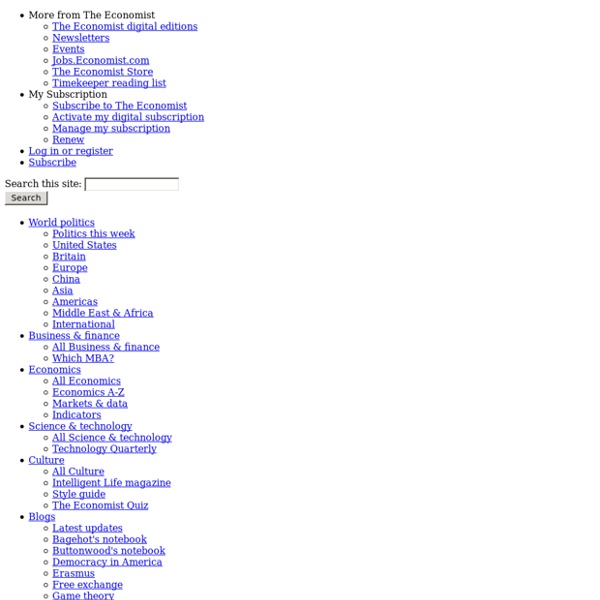



TermSciences - Terminologie Scientifique Spanish Language Style Guide and Glossaries | DigitalGov The Spanish Language Style Guide is a resource for government employees, translators, and communications professionals who work with the government to improve the way we communicate with the public in Spanish. The guide contains information on grammar and style issues as well as glossaries to standardize the use of Spanish across government. The guide was peer reviewed by Leticia Molinero, Maria Cornelio and Jack Segura, members of the North American Academy of the Spanish Language (ANLE). ANLE has an agreement with GSA to help improve and standardize the use of the Spanish language in government communications. Please Note: We continue to make improvements to this guide, so please send any comments or suggestions for additional resources to Laura Godfrey, Manager, GobiernoUSA.gov.
How to Write Guide: Introduction to Journal-Style Scientific Writing Introduction to Journal-Style Scientific Writing [ Table of Contents ] [ PDF Version ] | Get Your Thoughts Organized | Who is Your Audience? | Prose and Style | Abbreviations and Tense | First vs. Third Person | Use Active Verbs | References | Plagiarism Overview A critical aspect of the scientific process is the reporting of new results in scientific journals in order to disseminate that information to the larger community of scientists. Communication of your results contributes to the pool of knowledge within your discipline (and others!) and very often provides information that helps others interpret their own experimental results. Ladd Library links: Writing and Citing Guides Top of Page Plagiarism (use of others words, ideas, images, etc. without citation) is not to be tolerated and can be easily avoided by adequately referencing any and all information you use from other sources.
Explorations of Style | A Blog about Academic Writing APA Formatting and Style Guide Coming Soon: A new look for our same great content! We're working hard this summer on a redesign of the Purdue OWL. Worry not! Our navigation menu and content will remain largely the same. Summary: APA (American Psychological Association) style is most commonly used to cite sources within the social sciences. Contributors: Joshua M. Please note: Some electronic citations necessitate the use of brackets; APA style dictates that brackets should directly surround their content without spaces (e.g., [bracketed content] should look like this). Article From an Online Periodical Online articles follow the same guidelines for printed articles. Author, A. Bernstein, M. (2002). 10 tips on writing the living web. Online Scholarly Journal Article: Citing DOIs Please note: In August of 2011 the formatting recommendations for DOIs changed. Because online materials can potentially change URLs, APA recommends providing a Digital Object Identifier (DOI), when it is available, as opposed to the URL. Abstract
test « The Writer’s Diet The Book Is your writing flabby or fit? If your sentences are weighed down with passives and prepositions, be-verbs and waste words, The Writer’s Diet is for you – a practical, punchy introduction to good writing. The Test Use the online WritersDiet Test to identify paunchy prose, then follow the no-nonsense advice in the book to strengthen and tone your verbal muscles. The Author Helen Sword is Professor and Director of the Centre for Learning and Research in Higher Education at the University of Auckland. The News Manual
The Spread of Inequality The causes of socioeconomic inequality have been debated since the time of Plato. Many reasons for the development of stratification have been proposed, from the need for hierarchical control over large-scale irrigation systems to the accumulation of small differences in wealth over time via inheritance processes. However, none of these explains how unequal societies came to completely displace egalitarian cultural norms over time. Our study models demographic consequences associated with the unequal distribution of resources in stratified societies. Figures Citation: Rogers DS, Deshpande O, Feldman MW (2011) The Spread of Inequality. Editor: Matjaz Perc, University of Maribor, Slovenia Received: June 23, 2011; Accepted: August 15, 2011; Published: September 21, 2011 Copyright: © 2011 Rogers et al. Competing interests: The authors have declared that no competing interests exist. Introduction Inequalities in socioeconomic status are increasing sharply within and between societies [1]–[3].
In Regard(s) To vs. With Regard(s) To | Confusing Words and Homonyms | Misused Words in English In regard to and with regard to are phrases that mean "regarding," "concerning," "on the subject of." As regards—note the s on the end—means the same thing. Perhaps this is why people mindlessly pluralize regard and say in regards to and its partner in crime, with regards to. Both of the following examples are correct: With regard to your friend, let's hope she is well. Compare that to With regards to your friend. Let's hope she is well. In the first sentence, With regard to means "concerning." Letter A - B - C - D - E - F - G - H - I - J - K - L - M - N - O - P - Q - R - S - T - U - V - W - X - Y - Z